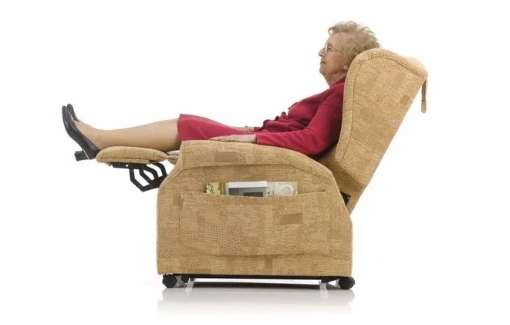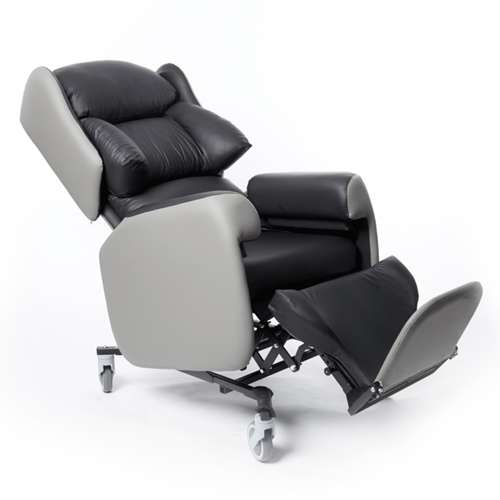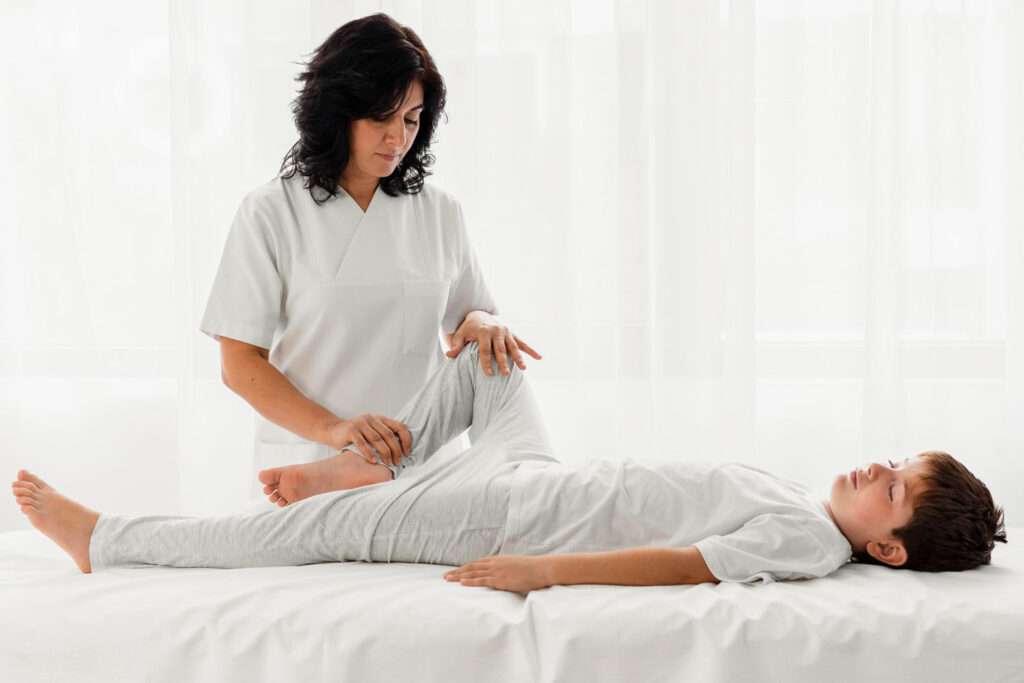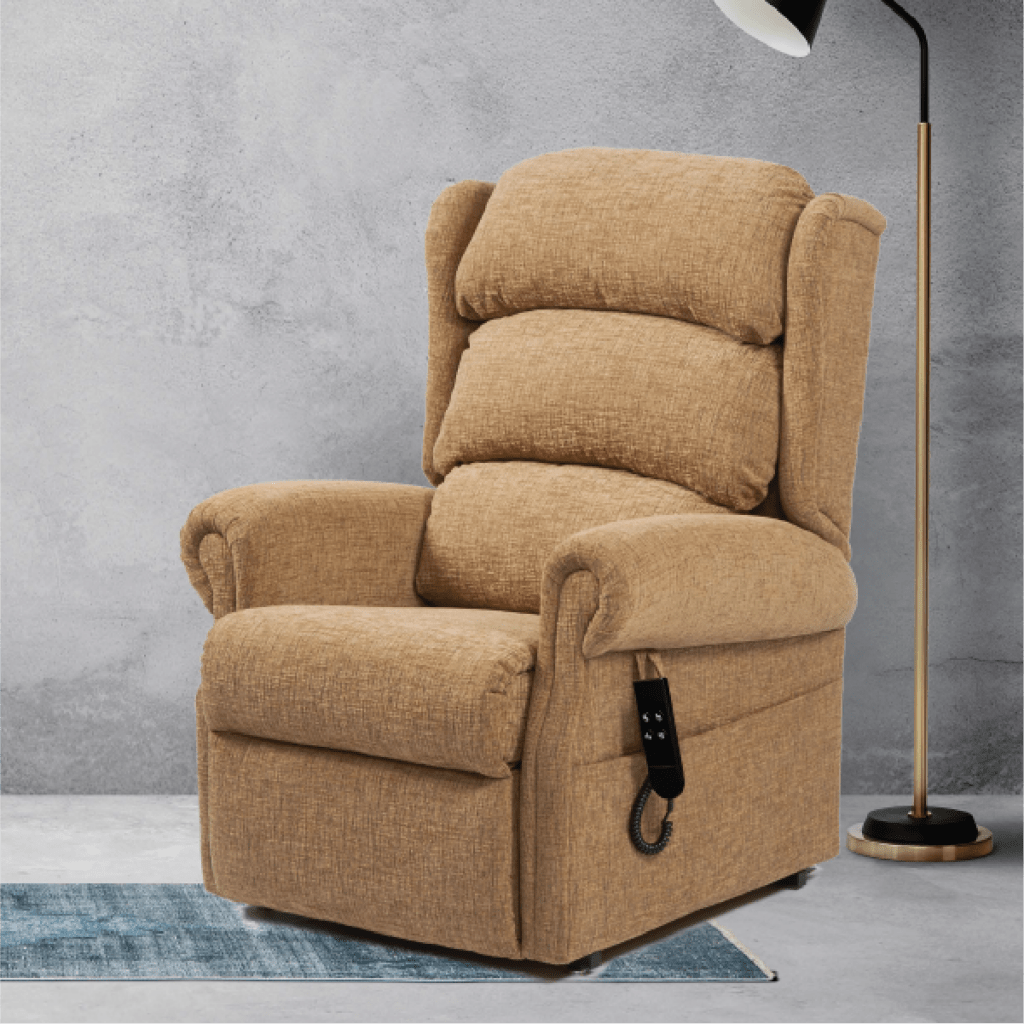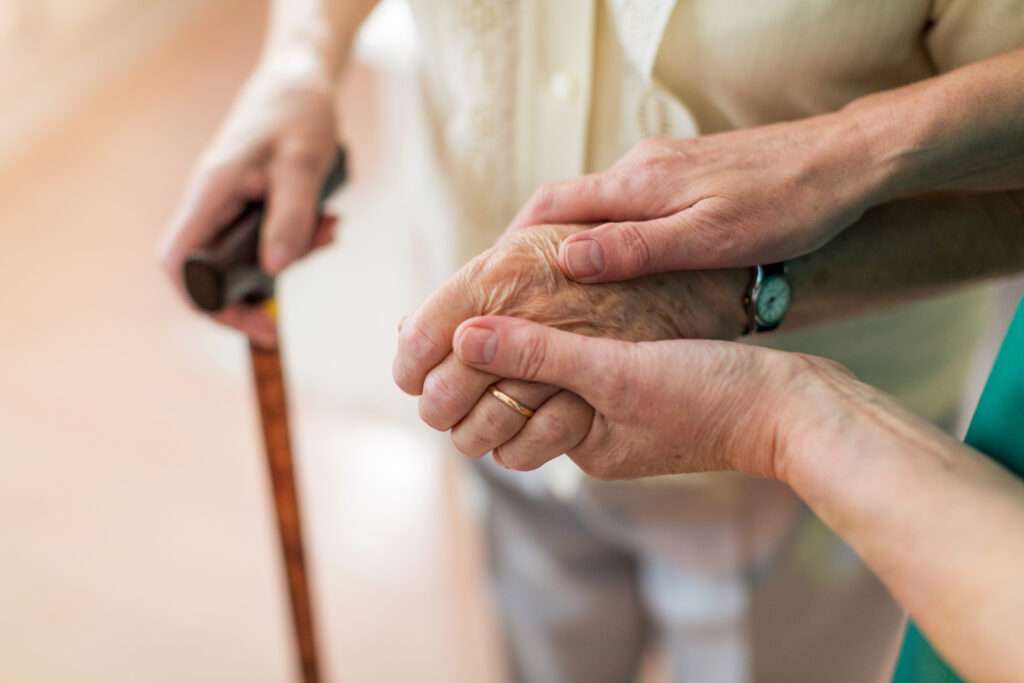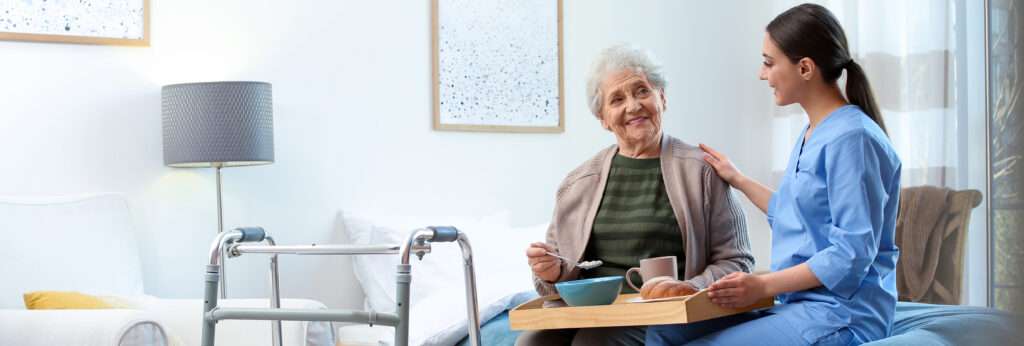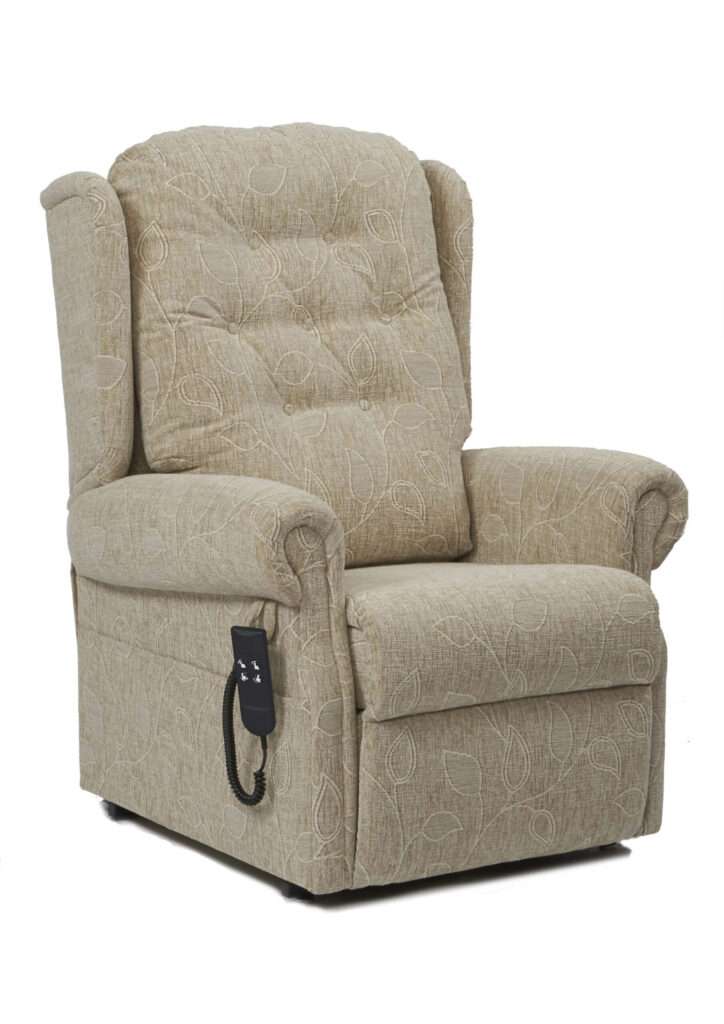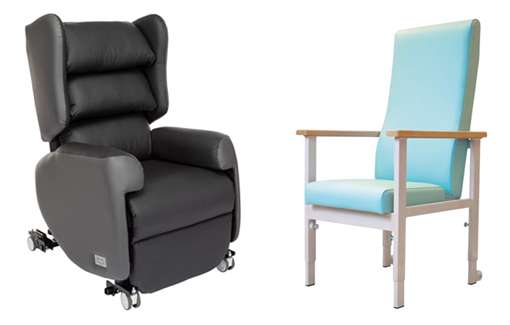A lot of people would say that dual motor riser recliner chairs are superior to their single motor counterparts. In fact, you’ll find that most high street seating has dual motor reclining action, but is this any better?
We would argue that single motor tilt-in-space is better to include in any specialist seating. Here’s how these features are different.
Jump straight to…
What is tilt-in-space?
Before we begin to compare, we should define what tilt-in-space is and how this movement differs from the recline that is in most chairs.
Tilt-in-space is slightly more advanced than a typical reclining function – it’s intended to maintain a person’s overall positioning.
This feature is unique and is used when providing care to low mobility or elderly people that may be sat down for prolonged periods of time.
The benefits to care environments such as hospitals and community care homes is that tilt in space allows the seated person to maintain all-important angles.
With tilt-in-space, hips, knees, and ankles are all kept at a 90° angle as the entire chair will tilt in space as one unit.
They way that this motion happens however, will differ depending on whether single motor or dual motor tilt-in-space mechanisms are in the chair.
What is single motor tilt-in-space?
Tilt in space is exactly as it sounds; instead of the seat staying flat while the backrest reclines, the whole chair will tilt the seated person backwards to redistribute body weight and pressure over a wide surface area.
Single motor tilt-in-space is used in many riser recliners and care chairs to give people the ability to tilt backwards and change their centre of gravity.
This movement is a particularly sought-after function in pressure injury prevention or management, a single motor tilt in space motion helps to spread the seated individual’s body weight over a larger surface area and reduce heavy pressure points.
Single motor tilt-in-space keeps the hip angle exactly the same and simply rocks the chair back to disperse body weight over a wider space.
Even more specialised pressure injury management can be offered when needed – read more on how care chairs can help with pressure ulcer care.
This single motor tilt in space also reduces the chances of the seated individual suffering from friction or shearing of the skin when the chair is in motion.
This is beneficial for anyone with concerns of skin integrity, it is a key issue and is a reason that single motor tilt-in-space rise and recline chairs are popular among those looking to prevent the development of pressure sores.
Blood circulation is also aided with single motor tilt-in-space in a riser recliner or care chair. The motion can elevate the seated individual’s ankles whilst maintaining the hip and knee angles.
A single motor tilt in space movement can help people with bad circulation or swollen feet.
Single motor tilt-in-space is usually operated through a two-button handset on the chair.
How is Dual Motor Action different to Single Motor Action?
Dual motor tilt-in-space aims to support the seated person throughout motion. The two motors in the chair provide users and carers with more flexibility over their positioning.
Dual motor riser recliner chairs can move the backrest and the leg-rest independently to the seat.
This tilt-in-space movement is ideal for users who need regular changes to their position.
This dual mechanism design also offers a high leg elevation, and a seated user can lay close to flat a dual motor riser recliner chair.
Dual motor action offers the most control over the range of movements in your electric riser recliner chair, it maintains the 90° hip, knee, and ankle angles with the option to move the backrest and leg rest independently.
This means that you can adjust your positioning whilst keeping your hip angle the same if necessary.
A dual motor chair allows you to open up the backrest and legrest angles independently whilst the seat stays flat. They are made with separate motors inside the chair to do this.
This dual motor action offers more flexibility in positioning while seated because the independent motors can be used to make the chair almost flat…even while a person is in it.
Whilst this might seem like a big benefit, a lot of seating specialists or occupational therapists would advise that you choose a rise and recliner or care chair with single motor tilt-in-space movement instead.
This is because single motor tilt in space can be better for maintaining correct posture and pressure relief management, as well as being a lot more comfortable.
When using a dual motor recline function, you may find that the chair isn’t necessarily redistributing your body weight.
For example, if you raise your legs using the independently controlled leg-rest, the seated person will still have the same amount of pressure going through your buttocks.
Tilt In Space vs Recline
Tilt-in-space utilises the surface of the backrest itself to spread body weight more evenly. Raising the leg-rest can also cause some discomfort when seated as it stretches the hamstrings.
Imagine sitting with the seat flat and then raising your legs to the same level as your seat; this is painful for most people’s hamstrings and can cause circulation issues over time.
You may also find that dual motor riser recliners end up offering less postural support as the support offered by the headrest and backrest ends up being in the wrong places.
For example, if you recline a car seat back, you may notice that the lumbar and head support shifts up the seated individual’s body and become less effective. The same principle is applicable to riser recliner chairs.
And again, when the backrest is brought back up, it may end up pushing the user further down the chair, squashing their diaphragm and abdominals.
This would mean that the seated person would have to re-adjust their positioning and slide up the chair to feel comfortable and supported again.
This, of course, is not ideal for people who have reduced body strength or any sort of disability which makes repositioning difficult.
Another factor to consider is how a person is positioned when the backrest is reclined – the seated person will end up facing the ceiling, which isn’t good for socialising or other daily activities.
Single motor tilt-in-space repositions the chair so that the user can look forward and enjoy socialising whilst rocked back.
What is dual motor tilt-in-space?
Dual motor tilt-in-space is named so because of the two-motor mechanism inside in the chair that provide more flexibility over positioning.
A dual motor tilt-in-space function offers the best of both worlds and keeps the 90°-90°-90° hip, knee, and ankle seating angles with the option to move the backrest and legrest independently.
This means that you can adjust your positioning whilst keeping your hip angle the same if necessary.
Summary
Single action motor – One motor in the chair that controls the tilt in space action
Dual motor tilt in space– Two motors that control the tilt in space separately. Backrest and footrest motions operate independently
In most cases with low mobility, elderly & disabled patients, single motor tilt-in-space will offer better positioning and postural support over time.
Dual motor tilt in space is a fine option if you don’t require much support and are mobile and strong enough to reposition regularly.
Single motor tilt-in-space can be a better option even if it offers less flexibility in positioning.
Make sure to check if your chair has single motor tilt-in-space before purchasing it because it could make all the difference in the long-run.
Like most things in the specialist seating world, choosing whether a single or dual motor electric riser recliner is right depends on your specific needs.
Book an assessment and our assessors can help you discover that equipment is best for your needs.
Use the below form to contact us – our experienced seating specialists would be happy to provide you with everything you need to make an informed choice.





